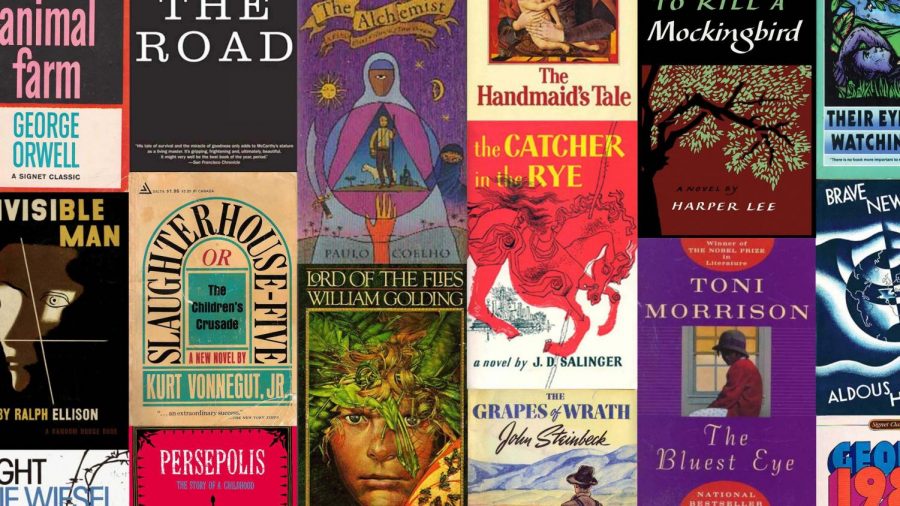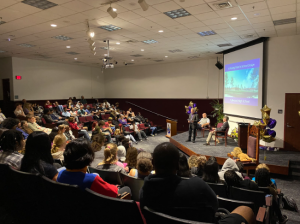Is the curriculum diverse enough?
February 27, 2019
The Roaring Gazette talked with various Tallwood history and English teachers on their perspective and thoughts on the representation, or lack thereof, of people of color in their curriculums.
History teacher, Mrs. Freeman, claims that the lack of representation is due to the outdated curriculums. “Newer research such as oral history is not included due to the Standards of Learning only being updated every 10 years or more.” Unfortunately, this is an issue for History teachers because there is no room for them to improve the curriculum individually.
In English curriculums, however, the absence of people of color is due to the period of time that the curriculum’s books were written. Ms. Tuckerman, an AP 11 English teacher, stated that “very few people of color were published before 1900, so the courses that cover older texts are overwhelmingly discussing white male authors.”
Additionally, English teacher, Ms. Weather, stated that the English curriculum “often misses the mark on representing the diverse population that it serves.” This is an issue, as students should see themselves reflected in the writers they read.
Moreover, she stated that “public education is a reflection on the society it stems from.” Ms. Weather confronted societal standards and the representation issues in public education. She declared, “…society as a whole is uncomfortable with change, sometimes unwilling to confront its painful history, and unmotivated to rectify it.”
Ms. Freeman stated that the lack of full representation leads to a “half truth” and “false assumptions and conclusions about history.” This can deplete literature, in the English curriculums, of people of color and their perspectives.
Ms. Weather shared that a reader shall not narrow their experience with certain literature through a limited view of certain authors. This will lead them to see a “single story of people who look like you” which will lead one to “believe that is all you can become,” according to Ms. Weather’s favorite Ted Talk by Nigerian author, Chimamanda Adichie.
In comparison to the history curriculums, the English curriculum is “reviewed and changed on a regular basis, and the division does ask teachers for suggestions,” according to Ms. Tuckerman. This allows for more representation in English classrooms which, overall, allow for students to gain more exposure to cultural diversity through the perspectives of people of color through multiple time periods.
Ms. Tuckerman stated that “students need exposures to other cultures to help them respect differences in the people they deal with now and will deal with in the future,” and that the “literature should include diversity because the students that comprise the classes are diverse.”
Ms. Freeman claimed that the problem with the lack of proper representation of people of color “is not with the individual persons of color being taught, but the larger story of how race was created and the implications of the systems created that maintained a racially advantaged society.” This expanded viewpoint for students when studying history can allow them to understand why there is a lack of color representation and connect it to today’s society within the context of societal diversity.
In a historical context, teachers can gather opportunities to provide various perspectives of all people of a certain time period allowing them to include people of color. For instance, “if you are teaching about the American Dream, then pairing a text that examines what that dream looks like for Black Americans or immigrants would be an excellent opportunity to examine the ways in which that dream differs by experience,” according to Ms. Weather.
Expanding these perspectives for students, especially within these concentrated curriculums, can lead them to understand multiple perspectives during certain time periods which is crucial in these subjects. However, the inclusion of all perspectives should be cautious in not providing biased ones.
“If you’ve only experienced characters who live lives of pain, sadness, and labor; especially if you are not shown the complexities of their experience through teaching, then that is your subconscious expectation of life,” according to Ms. Weather.
Essentially, providing students with opportunities to be exposed to people of color in literature and history settings allows them to become more open-minded about various perspectives. This creates an open classroom environment that encompasses societal issues of race and ethnic diversity that are often intertwined with prejudice. This type of environment in a school leads students to grasp and want to lean towards discover learning of various perspectives of humans in scholarly topics because of their background, not despite of it.











Ntutha • Aug 20, 2020 at 12:23 pm
Need expert help in mastering curriculum development